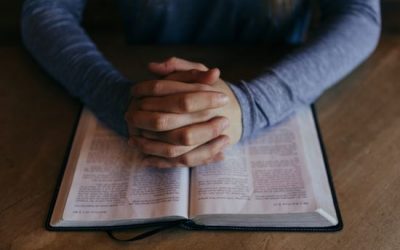The Seventh-day Adventist Church is a worldwide nonprofit Christian organization. So, to keep things running smoothly, maintain cohesiveness in mission, and prayerfully discuss current issues, the General Conference (GC) of Seventh-day Adventists holds a “General Conference Session” every five years. It is a 10-day business meeting, along with various prayer meetings and Bible study sessions. Delegates from around the world discuss and vote on major decisions for the church as a whole and set goals for the next few years. The next GC Session is in 2025.
Though a business meeting, anyone (official church member or not) can attend the activities and watch the presentations. This makes the GC Session one of reconnection, fellowship, learning, and spiritual enrichment.
Let’s go over the basics of what’s involved and how it all works:
- General Conference session framework and procedure
- GS session 2025
- GC session history
- Why the GC session is important
We’ll start with an overview.
General Conference session framework and procedure
The General Conference Sessions are quinquennial business meetings, similar to what many large organizations or governmental entities do to stay engaged with their constituencies. Leaders, workers, and members come together to discuss current events, issues, and policies, and elect the next term’s leadership.
The Adventist Church’s General Conference has its headquarters in Silver Spring, Maryland. This administrative office coordinates ministries, mission efforts, and other operations within the world church.
It’s also the location of the Biblical Research Institute, which continually studies Scripture and keeps the proceedings of the denomination aligned with biblical principles. Elected officials serve as this office’s leadership.
Delegates are elected from each region of the world to represent their constituencies at the GC session. Generally, delegates tend to be local church officers, pastors, teachers, employees of ministry organizations, or others who have demonstrated consistent service, involvement, and understanding of the discussion points relevant to the current Session.
The number of delegates elected from each region depends on criteria such as population, membership, ministry and mission activities, and other relevant factors. Then, along with the GC directors, church administrative officers, ministry leaders, and so forth, discuss the issues of that session and vote on the outcome.
The items being voted on can include nominating the president, amendments to the church’s constitution, potential changes to the church manual, and goals for the church in the next five years.
To be clear, though, GC Sessions are open to any who wish to participate and see how decisions are made and so forth. You don’t have to be a delegate. Usually, tens of thousands of people attend the event. During the actual business meetings, however, only delegates and those with special invitations are allowed to present to the delegates, and only delegates can vote.1
Besides voting, the business sessions also include administrative reports from the different regions of the world church. These reports may include membership updates, reports on special evangelism efforts, informing the church of specific needs or challenges in certain areas, etc.
In addition to the official business meetings, GC Session also includes ancillary meetings, or supplementary, secondary meetings. Unlike business sessions, ancillary meetings focus on the social and spiritual aspects of a GC Session. They’re also tailored for the laity and other attendees who are not delegates, such as other church employees or local church leaders, exhibitors, session volunteers, or family members of the delegates.
Ancillary meetings might include:
- Ministry training sessions
- Topical seminars
- Musical programs
- Group-based ministry activities or sessions, such as women’s and men’s ministries, family ministries, youth ministries, and more.
- Worship meetings
- Prayer rooms2
And besides all these events and meetings, attendees also can enjoy browsing through the large exhibit hall. Here, various ministries and church organizations showcase their ministry projects and services, hand out samples or freebies, and network with one another.
So with all these things to do, a typical day at GC Session might begin with a morning worship session. This allows everyone to get into a spiritually-focused mindset for the day, praise God, and ask the Holy Spirit to guide all the official proceedings and ministry activities.
The first business session occupies the delegates for the remainder of the morning, then breaks for lunch. Another business session runs through the afternoon.
In the evening, the atmosphere shifts from business to reflection, appreciation, and enjoyment. Different regions of the world will present mission spotlights, share stories, and near the end of the event, showcase interesting things from their cultures and traditions during what’s called the “Parade of Nations.”3
For those who can’t attend in person, GC Session is typically livestreamed and covered by the Adventist News Network (ANN) and the Adventist Review.
Next GC session— Summer 2025, St. Louis, United States
GC Sessions are to be held every five years. The next one will take place from July 3-12, 2025 in St. Louis, Missouri. It will be the 62nd GC Session in the Adventist Church.
Because so many delegates now represent all the regions of the church, today’s GC Sessions are commonly held in baseball or football stadiums or convention centers in order to accommodate everyone. The Sessions of 2025 will be held at America’s Center Convention Complex.4
The one recent exception to the 5-year schedule was the GC Session of 2022. Due to world health concerns around that time, this event was shorter and was a hybrid of in-person and virtual events. The upcoming 2025 session, however, will be held entirely in-person, though select meetings will be available to view over livestream, as before.5
The theme for this Session is “Jesus Is Coming, I Will Go!” Ted Wilson, current president of the General Conference, remarks:
“[The theme] reminds us of our wonderful hope in the soon coming of our Savior and the importance of answering God’s call to go wherever He may lead to reach the world for Him.”6
Many have already made plans to attend 2025’s GC Session.
Next, let’s look at what GC Session has been like throughout the denomination’s history.
GC session history
 The first General Conference Session was held May 20, 1863 in Battle Creek, Michigan. At this point, the church was beginning the process of becoming organized. A few Adventists, mainly from the northeast and midwest United States, met in a small wooden church, drafted a constitution, elected a president, and established themselves as a Protestant Christian denomination.7
The first General Conference Session was held May 20, 1863 in Battle Creek, Michigan. At this point, the church was beginning the process of becoming organized. A few Adventists, mainly from the northeast and midwest United States, met in a small wooden church, drafted a constitution, elected a president, and established themselves as a Protestant Christian denomination.7
At first, GC Sessions were held every year in order to discuss and decide on important issues. But as time passed and the church grew, the time between sessions grew longer. In 1970 it was decided to hold these larger business meetings every 5 years.
Some GC Sessions are more well-known than others. For example, the 1888 GC session helped steer Adventists back to some important doctrinal points about salvation by faith,8 and the development of what eventually became the church’s doctrine about the Trinity.9
Why the GC Session is important
When a religious organization becomes a global entity made up of a wide variety of regions, cultures, personalities, methods, needs, and opportunities, a unifying event is needed every few years to help keep things on track.
- It’s a time to make major decisions. As the governing body of the entire worldwide church, the responsibility at this level is to guide discussion and decisions related to doctrine, organization, evangelistic efforts, and other issues that affect how the church runs from the administrative level to the local churches all over the world.
- It’s a time to reconnect. Delegates gather from around the world to engage with one another and learn about the joys and the challenges everyone is facing in their regions. It’s an opportunity to learn about other cultures, as well as different ministry methods and approaches.
- It’s a time to refocus. With representatives from the worldwide church coming together, delegates can stay in touch with what’s happening in other places and tap into a broader perspective. It’s an opportunity to set goals together that can not only lend assistance to where it’s needed, but improve the church as a whole.
From the beginning of the Adventist Church, the General Conference Session has been one of the most important aspects of church structure.
It keeps the church making decisions that represent church members in all locations, showcase cultural and spiritual insights, and keep the church unified in mission.
This five-year tradition was born from a need to keep the church focused on the most important motivator we have—and the very reason we exist as a denomination: to spread the wonderful news of Jesus Christ’s love and of His soon return.
Want to learn more about what it’s like to lead a church?
Important GC Session 2025 information:
When: July 3-12, 2025
Where: America’s Center Convention Complex
St. Louis, Missouri, United States
Theme: Jesus Is Coming, I Will Go!
Website: https://www.gcsession.org/
Notable GC Sessions in Adventist History:
1863: General Conference of Seventh-day Adventists organized, and the denomination is made official.
1888: Helping refocus and uphold the role of salvation by faith
1901: Significant reorganization, which included creating departments
1909: The last GC Session Ellen White attended
1980: 27 Fundamental Beliefs established
2005: 28th Fundamental Belief added
Related Articles
- “Frequently Asked Questions about the General Conference Session,” General Conference of Seventh-day Adventists. [↵]
- Ashworth, Rachel. “62nd General Conference Sessions set for July 3-12, 2025,” Adventist News Network, August 28, 2022. [↵]
- “Frequently Asked Questions about the General Conference Session.” [↵]
- “President’s Welcome,” General Conference of Seventh-day Adventists. [↵]
- Ibid. [↵]
- Ibid. [↵]
- “The History of the General Conference in Session,” General Conference of Seventh-day Adventists, [↵]
- “The 1888 General Conference Session,” Lineage Journey. [↵]
- Burt, Merlin D. “The Trinity in Seventh-day Adventist History,” Ministry Magazine, 2009. [↵]
More Answers
What Is Vespers?
Friday rolls around, and you’re spending time with your Adventist friends or relatives when they mention they’re going to vespers tonight.
Adventist Pastors
What is the role of a pastor in the Adventist Church? The position itself, at least as far as a local congregation is concerned, is not much different from that of pastors in other protestant denominations.
The Leadership Structure of the Seventh-day Adventist Church
The Seventh-day Adventist Church has a representative form of structure that connects its 90,000-plus congregations across the globe and gives its members a part in decision-making. Though the Church was incorporated in 1863, this system came about during the church’s reorganization from 1901 to 1903. It includes four levels of organization.
What to Expect When You Go to an Adventist Church
If you’re attending an Adventist church for the first time, you may wonder what it’s really like. While each Adventist church is unique in its collective personality and local culture, Adventist church services are generally similar to most other Protestant church services.
Adventist Education
Seventh-day Adventists have historically upheld the importance of a well-rounded, high-quality education. Instead of a one-size-fits-all approach to teaching and learning, the Adventist Education system operates on the principle of educating the “whole” person.
Evangelism
Evangelism is simply sharing the truths of the Bible with someone else. And Adventists are all into it.
Everything You Need to Know About an Adventist Church Potluck
Every so often, usually on a schedule ranging from once a week to once a month to once a quarter, an Adventist church will have “fellowship dinners,” often casually referred to as potlucks.
The Seventh-day Adventist Hymnal
The Seventh-day Adventist Hymnal is a songbook used worldwide by many Adventist congregations during their worship services. Since its publication in 1985, it has helped foster praise to God while reminding church members of our mission and drawing them closer to Jesus.
What Are Seventh-Day Adventist Sermons Like?
In nearly every Seventh-day Adventist Church, the sermon is the focal point of the main service—similar to many Protestant Christian denominations. It is a time of biblical instruction by the pastor, who shares what they’ve been studying in the Bible and preparing over the previous week.
Who Are Adventists
The Seventh-day Adventist Church—“Adventists” for short—is a Christian denomination of ordinary people who seek to follow Jesus and live out His mission in this world. Established in 1863, we hold to the Protestant principle of sola scriptura, which means the Bible guides everything we do.
Why is the Great Controversy in my mailbox?
Every year, households across North America receive free copies of a 150-year-old book, The Great Controversy. Millions more are shared around the world.
How do Adventists choose what to eat?
Food blogs overwhelm the internet; food fads are all the rage; and copycat and healthy versions of food are the subject of many a get-together.
Didn’t find your answer? Ask us!
We understand your concern of having questions but not knowing who to ask—we’ve felt it ourselves. When you’re ready to learn more about Adventists, send us a question! We know a thing or two about Adventists.















